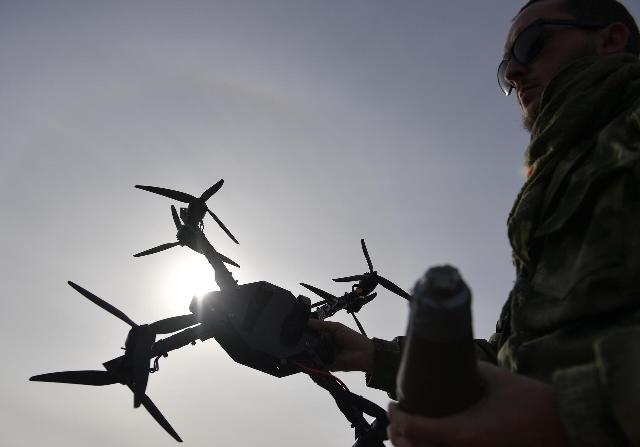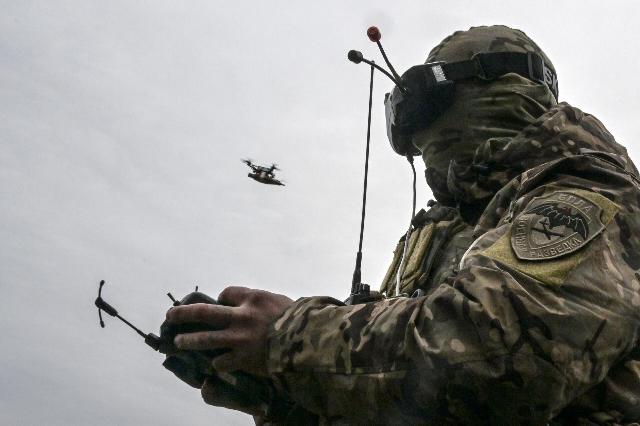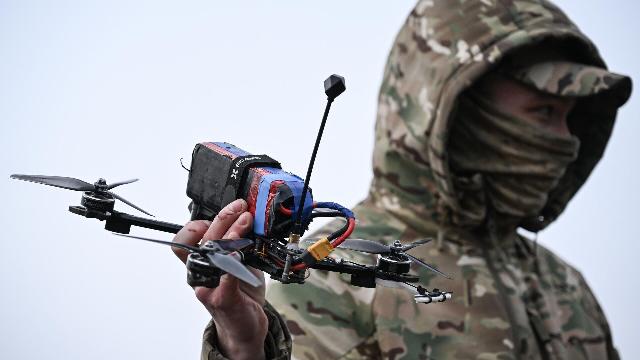MOSCOW, Apr 13 — RIA Novosti, Andrey Kotz. The fighting in the Kursk region has given a serious impetus to the use of drones. Both sides are actively using reconnaissance and attack drones, gradually developing their own techniques and techniques. The tactics of combating UAVs are constantly being improved, acquiring more and more complex and sophisticated forms. About the features of the drone war — in the material of RIA Novosti.
Drones on wires
The Battle for the Kursk region has become the finest hour of Russian FPV fiber-optic copters. The number of targets destroyed by them goes into the hundreds. These "birds" completely ignore electronic warfare, as they are controlled not by radio signal, but by wire. The ultrathin fiberglass cable on the body coil is gradually unwound in flight. Many infantry ATGMs operate on the same principle. Another advantage is the high resolution and clarity of the transmitted image. There are a lot of excellent quality videos on the Web in which a fiber-optic drone playfully flies around escort SUVs studded with electronic warfare antennas and sticks into a "fat" target — a tank or an infantry fighting vehicle.

FPV Drone Operator
Image source: © RIA Novosti / Pavel Lisitsyn
However, there are disadvantages. Such UAVs are very difficult to control, they are very clumsy. There is always a risk of cable breakage. In addition, if "classic" FPV drones, when using repeaters, are capable of flying 40-50 kilometers and harassing enemy rear communications, then the maximum fiber-optic range is 20 kilometers. However, this was enough for defensive battles in the Kursk region. Acting from ambushes, the soldiers of the North group inflicted serious damage on the enemy, thwarted many attempts by the Armed Forces of Ukraine to counterattack.
Ukrainian "wired" drones are almost identical in terms of tactical and technical characteristics to Russian ones. So far, the Ukrainian Armed Forces have been using them sporadically. But there is no doubt that they will set up mass production with Western money.

FPV Drone Operator
Image source: © RIA Novosti / Evgeny Biyatov
A characteristic detail of the Kursk region today is kilometers of fiberglass "cobwebs". You can't see it in cloudy weather, but it sparkles beautifully in the sun. And then you realize the scale of the problem.
The thinnest threads entangled forest belts and settlements, roads and roadsides, fields and ravines. You can't pick it up — it's easy to cut yourself and get dozens of small glass fragments under your skin, which are then very difficult to pull out. It is still unclear what damage fiberglass does to nature and agriculture. And it is unclear how to remove all this after the war.
Ambushes and mining
The technique of Russian drones, brought almost to perfection during the battles for the Kursk region, is FPV ambushes. At early dusk or before dawn, special groups in cars with their headlights off "mine" the most important roads with drones. The "bird" with the camera turned on is left on the side of the road so that small vegetation does not block the view.
The operator on duty makes himself a cup of tea and sits comfortably in front of the widescreen screen. Waiting time is up to several hours. Sometimes to no avail. But if the enemy's equipment gets into the camera lens, the drone is lifted into the air. A couple of seconds for orientation — and now a "bird" with explosives is attacking a pickup truck or an infantry fighting vehicle on a catch-up course. This tactic greatly saves the UAV's battery power and significantly reduces the time from detecting a target to hitting it.
Remote mining from drones has also been widely used in combat. On both sides. The point is that even in the rear, the enemy does not feel safe. The copter descended, dropped an explosive device, and flew away. As a rule, this is done on the roads along which the enemy group is supplied. This allows you to isolate the combat area and prevent the enemy from breaking out of the ring or bringing reinforcements and ammunition to it.
It was thanks to remote mining that Russian troops cut off the occupied Sudzha from supplies from the Ukrainian Yunakovka. Drones were also used to blow up bridges over the Suju River. As a result, the enemy fled, abandoning expensive Western equipment.
Knock down the FPV
Methods of combating UAVs are also being improved. There is no universal "antidote", an integrated approach is needed. Firstly, electronic warfare systems based on military equipment. They don't always protect and are useless against fiber-optic cables, but it's better with them than without them. The second echelon of defense is smoothbore rifles, mainly 12-gauge. Finally, these weapons began to enter the army en masse. A triple shot charge or a special Intercept cartridge with a polymer network demonstrated high effectiveness against enemy FPV drones. And the heavy and slow-moving Baba Yaga is perfectly shot down by machine-gun fire.
Tests of the captured heavy drone of the Armed Forces of Ukraine "Baba-Yaga"
Image source: © RIA Novosti / Stanislav Krasilnikov
Thirdly, nets are stretched over the most dangerous sections of the roadway, which prevent the kamikaze UAV operator from targeting the vulnerable area of a tank or infantry fighting vehicle. Heavy armored vehicles themselves are necessarily equipped with additional screens and mangal visors. Of course, this is not a panacea. But any obstacle can save the car and the crew. "Bald" equipment — only from closed firing positions.
Finally, the very nature of the fighting has changed. Movements near the line of contact are exclusively "gray": at dusk or before dawn. At this time, a small window opens: the enemy changes the daytime "birds" to night or vice versa. About 40 minutes — you need to have time to rotate, bring ammunition and evacuate the wounded.
Understanding the tactics of UAV confrontation is extremely important today. The enemy has launched the production of cheap FPV drones and, with their help, partially reduced the gap between the Russian army and the Russian army in terms of artillery salvo weight. The Ukrainian Armed Forces have so many "birds" that they are not spared on individual infantrymen. The task of combating drones should become a priority for the defense industry. It is impossible to give small amounts of air to the Kiev regime.


